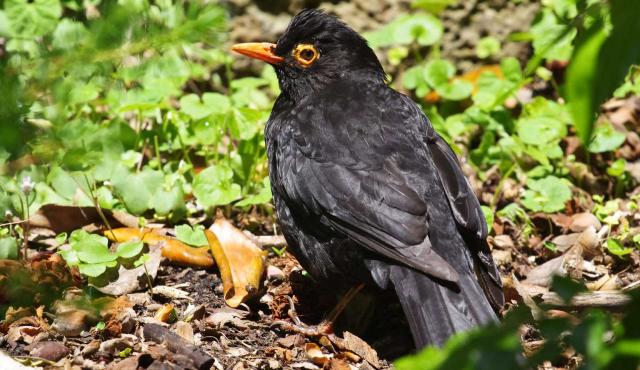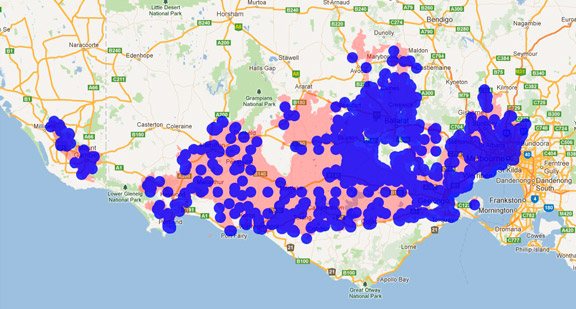A range of teacher professional learning programs will be developed to accompany the Biodiversity of the Western Volcanic Plains online outreach...



Common Blackbird
Turdus merula
Breeds September-December. Builds a cup-shaped nest of grasses bound with mud in a tree, shrub, low bush or tree hollow. Competes with native birds.
| Details | Description |
| Type | Bird |
| Group | Thrush |
| Identifying Characteristics | |
| Distinctive Markings | The adult male is black overall with a bright orange-yellow bill and eye-ring. |
| Diet | Omnivore, feeding on invertebrates, seeds and fruit, Scratches in leaf litter, lawns and soil. |
| Habitat | Gardens, lawns, parks, orchards, woodlands, forests and watercourses. |
| Native Status | Introduced |
| Sounds | A mellow fluting call with harsh chattering. "tseee". |
| Taxonomy | |
| Phylum | Chordata |
| Class | Aves |
| Order | Passeriformes |
| Family | Turdidae |
| Genus | Turdus |
| Species | merula |

Distribution maps indicate current and historic locations where species have been sighted.
Source: Atlas of Living Australia
| Conservation Status | |
| DEPI Advisory List | Not listed |
| FFG Act | Not listed |
| EPBC Act | Not listed |
The conservation status of species is listed within Victoria and Australia.
The Department of Environment and Primary Industry (DEPI) Advisory List consists of non-statutory advisory lists of rare or threatened flora and fauna within Victoria.
The Flora and Fauna Guarantee Act 1988 (FFG Act) lists threatened species in Victoria. Under the Act, an Action Statement is produced for each listed species.
The Environment Protection and Biodiversity Conservation Act 1999 (EPBC Act) is the Australian Government’s key piece of environmental legislation, listing nationally threatened native species and ecological communities.



